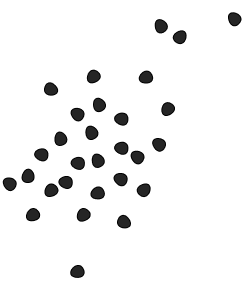Hypertension, commonly known as high blood pressure, is a prevalent health condition that affects millions of people worldwide. It occurs when the force of blood against the walls of the arteries is consistently too high, leading to potential complications such as heart disease, stroke, and kidney problems. While there are various factors that contribute to hypertension, one crucial element that plays a significant role is an individual’s diet. In this article, we will delve into the intricacies of a hypertensive diet, exploring its causes, symptoms, and diagnosis. Additionally, we will discuss strategies and recommendations for treating hypertension through diet, as well as the importance of lifestyle changes, including exercise and medication, in effectively managing this condition. By understanding the impact of dietary choices and making appropriate alterations, individuals can take control of their health and work towards maintaining optimal blood pressure levels.
1. Understanding Hypertensive Diet: Causes, Symptoms, and Diagnosis
Hypertension, commonly known as high blood pressure, is a chronic medical condition that affects millions of people worldwide. It occurs when the force of blood against the walls of the arteries is consistently too high, putting strain on the cardiovascular system. While there are various factors that contribute to high blood pressure, such as genetics and lifestyle choices, diet plays a significant role in its development and management.
Causes of Hypertension:
Hypertension can be caused by a multitude of factors, including obesity, excessive alcohol consumption, smoking, stress, and most importantly, an unhealthy diet. Consuming excessive amounts of sodium, saturated fats, and cholesterol can lead to the development of high blood pressure. These substances can cause the blood vessels to narrow and become less elastic, making it harder for blood to flow freely.
Symptoms of Hypertension:
One of the most challenging aspects of hypertension is that it is often asymptomatic, meaning that individuals may not experience any noticeable symptoms until the condition has progressed to a severe stage. However, some individuals may experience symptoms such as headaches, dizziness, shortness of breath, chest pain, or visual changes. It is crucial to note that these symptoms are not exclusive to hypertension and can be indicative of other health issues as well.
Diagnosis of Hypertension:
Diagnosing hypertension typically involves measuring blood pressure using a sphygmomanometer, a device that measures the pressure in the arteries. Blood pressure is expressed as two numbers: systolic pressure over diastolic pressure. A blood pressure reading of 120/80 mmHg or lower is considered normal, while anything above is classified as hypertension. To confirm the diagnosis, healthcare professionals may conduct multiple blood pressure measurements on different occasions.
Understanding Hypertensive Diet:
Managing hypertension primarily involves making necessary lifestyle changes, and the most critical aspect is adopting a hypertensive diet. This diet focuses on reducing the intake of sodium, unhealthy fats, and cholesterol, while emphasizing the consumption of nutrient-rich foods. By following a hypertensive diet, individuals can lower their blood pressure, reduce the risk of cardiovascular diseases, and improve overall health.
A hypertensive diet typically includes:
1. Low Sodium Intake: Limiting sodium consumption is crucial as excessive sodium can cause fluid retention and increase blood pressure. It is recommended to consume no more than 2,300 milligrams of sodium per day, which is equivalent to one teaspoon of salt.
2. Increased Potassium Intake: Potassium helps counteract the effects of sodium on blood pressure. Foods rich in potassium, such as bananas, oranges, spinach, and avocados, should be incorporated into the diet
2. Treating Hypertension through Diet: Strategies and Recommendations
Treating Hypertension through Diet: Strategies and Recommendations
Hypertension, commonly known as high blood pressure, is a serious medical condition that affects millions of people worldwide. While there are several factors that contribute to hypertension, such as genetics and lifestyle choices, diet plays a significant role in its development and management. Adopting a healthy eating plan can effectively lower blood pressure levels and reduce the risk of complications associated with hypertension.
One of the key strategies for treating hypertension through diet is reducing sodium intake. High levels of sodium in the diet can cause water retention, leading to increased blood volume and subsequently higher blood pressure. The American Heart Association recommends limiting sodium consumption to no more than 2,300 milligrams per day, with an ideal goal of 1,500 milligrams for individuals with hypertension. This can be achieved by avoiding processed foods, which are typically high in sodium, and opting for fresh, whole foods instead.
Another important aspect of a hypertensive diet is increasing potassium intake. Potassium helps counteract the effects of sodium on blood pressure by promoting the excretion of excess sodium through urine. Fruits and vegetables, particularly bananas, oranges, spinach, and sweet potatoes, are excellent sources of potassium and should be included in a hypertensive diet.
In addition to sodium and potassium, a hypertensive diet should focus on consuming foods that are low in saturated fats and cholesterol. These unhealthy fats can contribute to the development of atherosclerosis, a condition characterized by the build-up of plaque in the arteries, which can further elevate blood pressure. Opting for lean proteins, such as skinless poultry, fish, and legumes, and replacing saturated fats with healthier alternatives like olive oil can help manage hypertension.
Furthermore, incorporating whole grains into the diet can have a positive impact on blood pressure. Whole grains, such as brown rice, quinoa, and whole wheat bread, are rich in fiber and nutrients that support heart health. Studies have shown that consuming whole grains regularly can lower blood pressure levels and reduce the risk of developing hypertension.
Lastly, it is essential to limit the consumption of alcohol and caffeine, as these substances can increase blood pressure temporarily. While moderate alcohol consumption may have some cardiovascular benefits, excessive intake can lead to hypertension. Similarly, caffeine, found in coffee, tea, energy drinks, and some medications, can cause a temporary spike in blood pressure. It is advisable to consume these substances in moderation or opt for decaffeinated options if possible.
When managing hypertension through diet, it is crucial to consult with a healthcare professional or a registered dietitian to tailor a dietary plan that suits individual needs. Each person’s response to dietary changes may
3. Lifestyle Changes for Managing Hypertension: Diet, Exercise, and Medication
One of the most effective ways to manage hypertension is through lifestyle changes, which primarily include making adjustments to one’s diet, incorporating regular exercise, and potentially taking medication as prescribed by a healthcare professional.
Diet plays a crucial role in managing hypertension. The Dietary Approaches to Stop Hypertension (DASH) diet is often recommended for individuals with high blood pressure. This diet emphasizes consuming fruits, vegetables, whole grains, lean proteins, and low-fat dairy products while limiting sodium, saturated fats, and added sugars. By following the DASH diet, individuals can reduce their blood pressure and improve overall heart health.
Reducing sodium intake is particularly important in managing hypertension. Excessive sodium can cause fluid retention and increase blood pressure. It is advisable to limit sodium intake to no more than 2,300 milligrams per day, and even less for individuals with certain health conditions or at higher risk of hypertension. Reading food labels, avoiding processed foods, and opting for fresh or homemade meals can help control sodium consumption.
Exercise is another essential aspect of managing hypertension. Regular physical activity helps lower blood pressure, improve heart function, and maintain a healthy weight. Engaging in aerobic exercises such as brisk walking, cycling, or swimming for at least 150 minutes per week, or about 30 minutes on most days, is recommended. Additionally, incorporating strength training exercises twice a week can help further improve cardiovascular health.
In some cases, lifestyle changes alone may not be sufficient to manage hypertension. Medication may be prescribed by a healthcare professional to help control blood pressure. Various classes of medications are available, including diuretics, beta-blockers, ACE inhibitors, angiotensin II receptor blockers, and calcium channel blockers. These medications work in different ways to relax blood vessels, reduce fluid retention, and lower blood pressure. It is important to follow the prescribed medication regimen and consult with a healthcare professional regularly to monitor the effectiveness and any potential side effects.
In conclusion, lifestyle changes play a vital role in managing hypertension. By adopting a healthy diet, engaging in regular exercise, and, when necessary, taking prescribed medication, individuals can effectively control their blood pressure and reduce the risk of complications associated with hypertension. It is important to consult with a healthcare professional for personalized recommendations and guidance in managing this condition.



